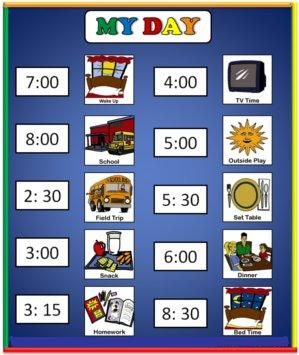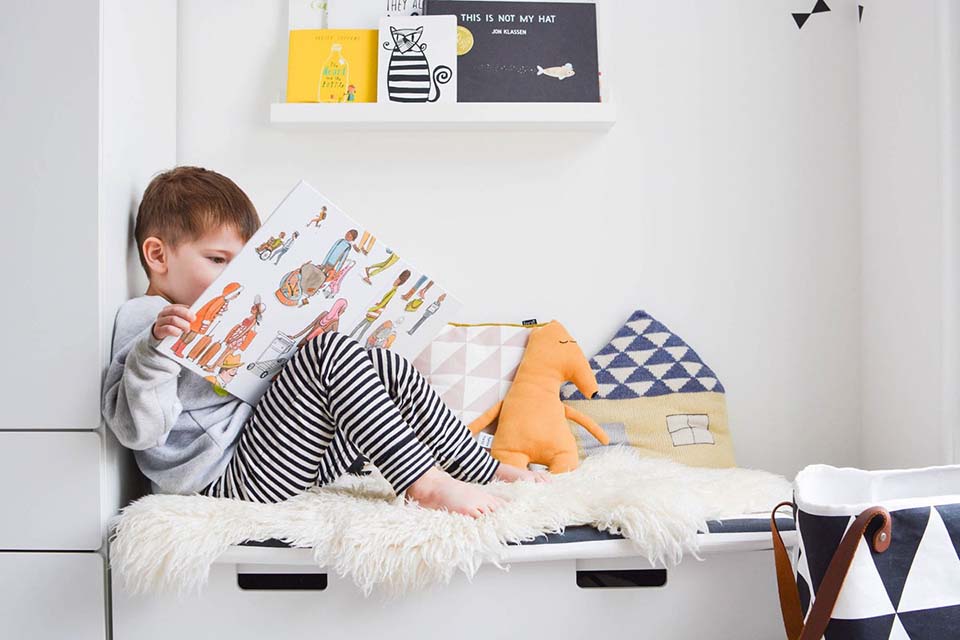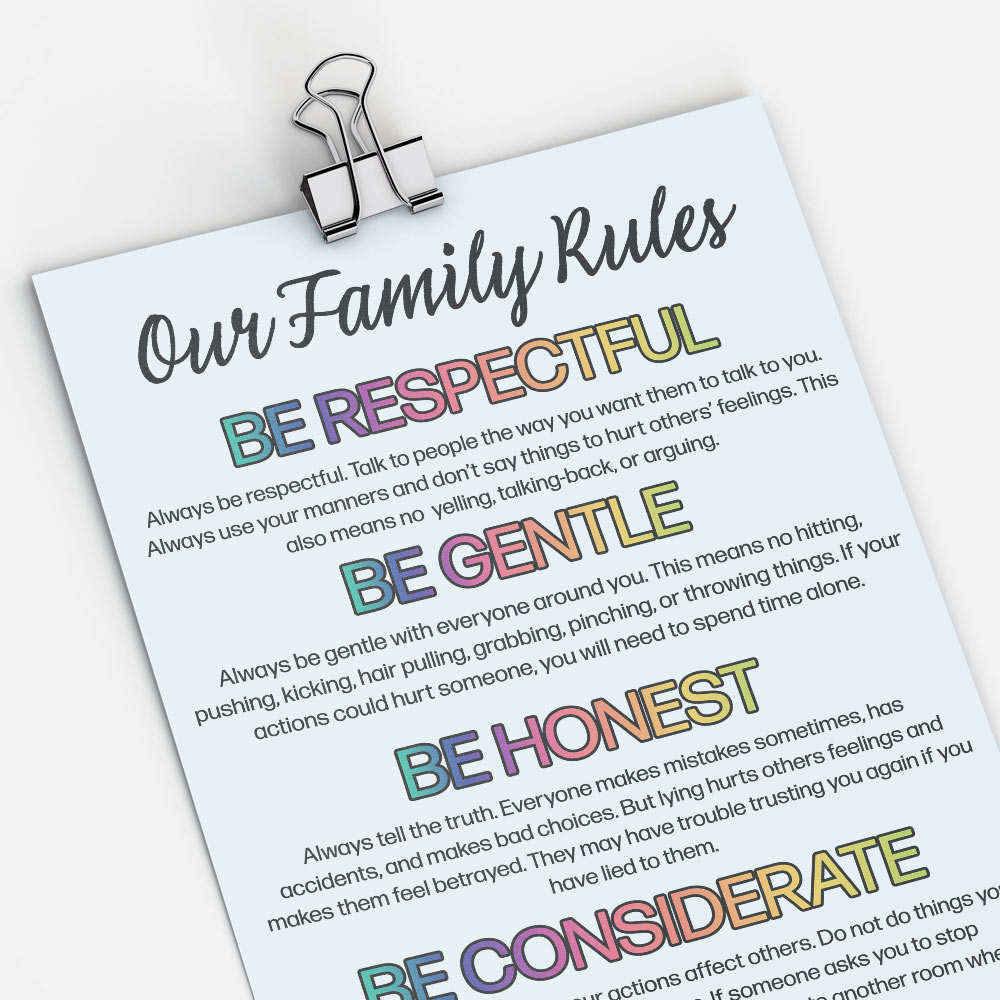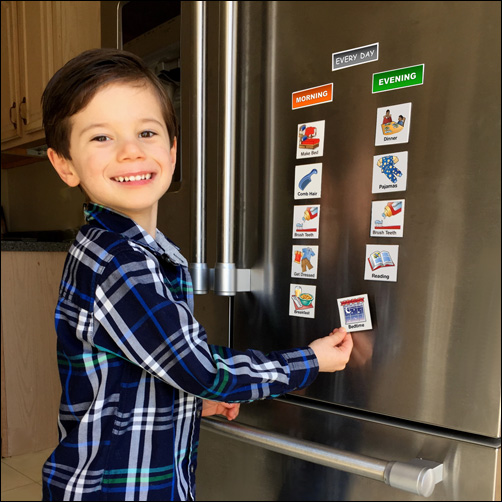6 Signs Your Child Needs More Structure – How to Provide Structure so Your Child Thrives
What’s inside this article: An overview of how lack of structure negatively impacts children’s behavior, the importance of structure for all kids – especially those with autism, four simple but actionable ways to implement more structure in your children’s lives.
Disclaimer: This post contains affiliate links
Honestly, all families can benefit in one way or another by adding more structure to their homes. It benefits the parents and children. But this is especially true for parents with autistic children.
However, it can be difficult to decide how to structure your home or how to start.
Although the bottom line is: kids need structure in order to thrive.
For many autistic or neurodivergent children, having a structured home environment helps them feel safe. This is more important than most people realize because felt psychological safety is a requirement for regulation.
Generally, any uncertainty may cause major stress for
It can be difficult for children to maintain appropriate behavior during new, unfamiliar, or uncertain situations due to this behavioral rigidity.
Does Your Home Need More Structure?
Kids need structure, and without a structured environment and routine, children may experience severe anxiety.
Consequently, they may experience more frequent meltdowns or tantrums. So, then, they may attempt to control all situations in order to cope. This often leads to power struggles.
For example, they may create and insist on following their own ritualistic routines.
Or, they may be extremely insistent on using certain objects like only the blue cup, only the red shirt, or only watching one TV show.
Behavior Red Flags:
Can you take a phone call or have a conversation with your spouse or another adult without your child getting into everything or interrupting you with demands?
If your home doesn’t have enough structure for your child, there are likely behavior problems such as:
- Transitioning issues -especially bedtimes, morning routines, homework routines, etc.
- Compliance issues – When you tell your kids to do something, do they even do it?
- Children don’t initiate activities on their own (if bored, they just bother their parents instead of finding something to do)
- Siblings never seem to get along – they may intentionally annoy one another or regularly fight.
- The house is hard to keep clean; things never seem to get put back in their place, items always seem to be lost, and the kids’ stuff is everywhere (especially toys).
- The kids never play independently, or they can’t play without supervision (even if they’ve reached an age where this should be possible)
Why does a lack of structure cause behavior challenges?
Unlike adults, children’s brains are still developing, especially the prefrontal cortex, responsible for executive functions. The prefrontal cortex is not fully developed until the mid-twenties.
This matters a lot. This is where the ability to plan ahead and make predictions about the future takes place.
Children can’t do this accurately simply because their brains haven’t yet developed that skill. So, they depend on structure and routine.
Uncertainty leads to anxiety. A highly predictable routine helps children feel secure and know what to expect, and practice by making simple predictions.

How to Add Structure to Your Home
Kids with autism thrive on routines. Therefore, adding structures to your home can help your child cope with all the inconsistencies in life.
But make no mistake – these structures are beneficial to all kids.
The world is filled with uncertainty. But, having a well-structured home can help your child feel safe because they will always know what to expect at home.
Additionally, it can help them understand expectations and gain independence.
If your child needs more structure, these changes will help reduce the chaos in your home and everyone will feel better because of it.
There are many ways to add extra structure to your home and your child’s day to meet their needs.
This post covers these four ways to add structure:
- Structure their environment
- Structure their time
- Prepare for changes
- Structure tasks and demands
Children process information best visually and kinesthetically; therefore, the best way to add structure to the home is with visuals and consistent practice.
Structuring the Environment
It’s important to structure your home in a way that will be easily understood by your child.
Start by first creating predictable spaces and routines within your home for certain activities. For example:
- A set “calm down” space
- A set play place for toys
- A consistent bedtime routine (ex. Brush teeth, story, lights out at the same time every day)
- A consistent morning routine
- A task or chore system where the motivator is visible, and task steps and completion are clear.
- Themed days of the week, such as “Taco Tuesday” or “Sunday Funday.”
- 4 or 5 clear “Family Rules” are displayed and that the entire family is expected to follow.
Structure Demands – The Task/Chore System
Now, to set up the work/chore system.
This can be any type of system that you create, which shows your child what their expectations and/or chores are.
Chores and responsibilities are one of the easiest ways to add more structure to your kids’ lives.
Make sure their responsibilities are developmentally appropriate. Your child needs to feel successful when completing these chores. You don’t want them to be a source of frustration.
It’s also important to have a specific way for your child to show that these tasks are “all done”. Such as an “all done” envelope or folder to place the visual in, removing it from sight. Or a “done” space to move the tasks over to, or a checkbox they can write on.
As well, it should be clear to your child what to do next.
SchKIDules offers great visuals for the home, and they’re available on Amazon – this has been the go-to choice for visual schedules and work systems in my home.
It’s a great way to give kids structure, showing them visually what needs to be done.
Their products are available here.
Structure The Time
Structuring the time means having a consistent routine followed each day that is specific, and your child can rely on it.
Using a visual schedule is the best way to do this.
Your visual schedule should:
- Show what activities will occur and what order they’ll happen in
- Show transitions within the day (like changing activities or environments)
- Promote independence
- It can be created for the whole day or broken up into chunks. For example, you could have a morning routine and an after-school routine.
There are so many ways to create visual schedules. Choose the one that works best for your family.
Personally, we need to keep our visual schedule as a checklist. The kids use a dry-erase marker to check things off as they progress through their day.
Different styles of schedules will work for different people. Check out the examples below for some inspiration.
Examples of Visual Schedules:
This one is also created using SchKIDules:

In the past, I’ve kept the kids’ schedule on my phone using a free app called “Time Tune.”
It sends an alert when it’s time to transition the kids to a new activity. That way, you can also complete your own responsibilities without forgetting about their structured day.
This is helpful if you’re someone who works from home like me.
Below is our summer schedule; however it will change when school starts:

At school, they created a simple visual schedule and task completion system using a cutting board, velcro, and pictures of different tasks.

What works for us is constantly evolving to meet the kids’ needs. This is an image of another schedule we’ve used for my older son, who reads well, during the school closures over the pandemic.
Now that he’s a teenager, he often uses reminders and alarms in his phone to help him follow his daily routines independently.

How to Begin Creating A Visual Schedule
If you’ve never done a visual schedule before it can be hard to know exactly where to start.
Follow these guidelines:
How To Create Your First Visual Schedule
Write down what already happens every day
The best way is to begin by writing down your schedule, starting with what already happens every day. (things such as dinner, waking up, bath time, going to school, etc.)
Fill in the gaps.
Fill in the gaps by deciding on more structured activities for your child for specific times.
Instead of telling them to “go play”, you can add activities like – outdoor play, fine motor play (crafts, drawing, cutting, beading, etc.), quiet time, etc.
Structure the environment.
Set up specific areas in your home where each of these activities will happen, and get any supplies you need.
For example, set up your craft table, get a bin and fill it with homework supplies, and set up a homework station. Build your calm-down space and anything else you want to create.
Decide how to initiate transitions.
Decide how you will transition between activities on the schedule – will you use a timer? A verbal cue? A sound warning? A song? Each activity needs a clear start and finish.
Plus, this transition cue should be consistent.
Create the schedule visually.
There are many different ways to do this. You can purchase one of the sets from SchKIDules, but you can also make this yourself – draw it by hand or create it by finding your own images online and printing them.
You’ll find some printables below, too.
Display your schedule.
Place the visual schedule in a central location in your home, such as the fridge, or in the family room. Ensure it’s in a location that makes it easy for you and your kids to check the schedule.
Or, laminate and clip onto a clipboard for your child to take along with them.
Teach your child to follow the schedule.
It’s not enough to make it and hang it up on your fridge – you need to actually teach your child the routine. This is the most important part.
This can take time and may require a lot of prompts and reminders in the beginning. You can’t frequently deviate from the schedule once it’s set – your visual schedule is like a contract between you and your child.
You can also read in more detail about how to create a routine for your children that everyone can actually stick to here.
Visual Supports:
I created Visual Supports Drag-and-Drop Routine and Premium Graphics Set.
This printable set includes 12 ready-to-use drag-and-drop routine templates & visual support templates, including 140 high-quality graphics, and an easy-to-follow tutorial for using the templates to create your own visual routines.
Remember:
Structuring the time goes hand in hand with the visual schedule – the items on your schedule need to have clear start times and end times.
Generally speaking, you don’t need to do the exact same thing every day, but if you schedule “Art” for 3 pm to 4 pm, then every day during that time, you need to be doing something related to art.
For example, painting, coloring, cutting, and gluing.
Structuring your home like this will bring order and some quiet to your home because your child will feel more comfortable knowing exactly what to expect and won’t rely on you for as much instruction as they do now.
It’ll also free up time for you to get things done.
Looking for activity ideas? – Allow Pinterest to be your best friend!
Prepare For Changes
It’s inevitable that sometimes the schedule needs to change – your children will have appointments, or you’ll have an unexpected errand to run that will cause a change in the routine.
This can throw your child out of sync. It’s important to prepare for these changes with your child as much as possible.
Use the other strategies to help your child prepare for changes, such as a change calendar, social stories, motivation, first-then statements, and optimizing language.
Conclusion
Children need structure. Adding more structure will help your child have less stress and anxiety, and therefore fewer anxiety reactions (like meltdowns).
It will also help your child be more tolerant of change since the warnings are in place to help them be successful with transitions.
Having more structure will also help you. When your home is well structured your child will know what’s expected of them and what they should be doing at all times.
As a result, they will need less direct attention and instruction from you. This will make it easier for you to get things done around the home, keep things clean, and even have an uninterrupted conversation with another adult.




